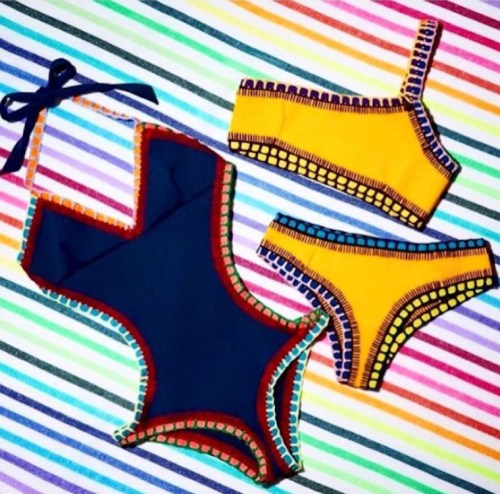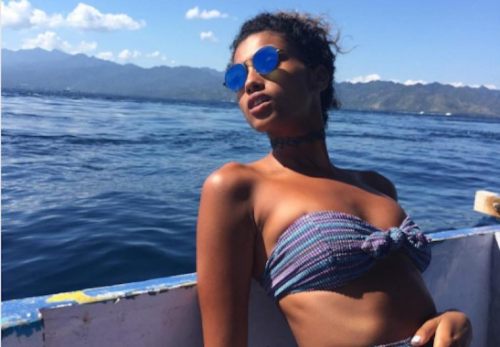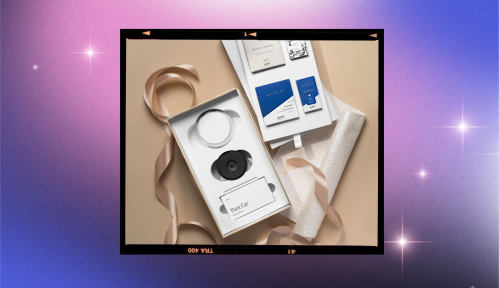Given that swimsuits are to summer what a scoop of nut butter is to your a.m. smoothie (in other words: necessary), you’d think finding a flattering option would be a cinch. Yet no matter your body type, the hunt’s often riddled with strike-outs. (“This top pinches.” “This bottom’s saggy.” “That one will definitely come off in the pool.”)
But if anyone’s figured out how to find The One (yes, that perfect-fitting option is out there), it’s Mali Sananikone Gaw. The designer (as well as co-founder and CEO) of new performance-luxe swimwear line Via Eden is a real-deal enthusiast—over the years, she’s amassed more than 300 suits, some of which she’s had since she was a teenager growing up in Hawaii.
Given that swimsuits are to summer what a scoop of nut butter is to your a.m. smoothie (in other words: necessary), you’d think finding a flattering option would be a cinch.
“The sheer volume of my personal collection can be partially attributed to the fact that it was hard to find swimsuits that I could wear to paddleboard or surf that were also stylish, luxurious, and made me look great,” Gaw says. It’s why she and her co-founder spent 18 months traveling around the world researching fabrics—and another year testing samples on real women—before they started production.
“Most high-end swimwear is fit on models with ‘perfect’ bodies,” a method inherited from the ready-to-wear clothing industry, she says. “This becomes a problem [because a suit’s] so small in comparison to a dress, and needs to fit like a second skin. It’s obvious when the fit’s imperfect somewhere.” (Not to mention there’s no such thing as a “perfect” body, but I digress.)
While industry standards are partially responsible for ill-fitting swimwear, Gaw also says the customer has more power than she thinks in the process.
Here, she shares six mistakes you may be making that prevent a perfect fit—and how to fix them.

You’re shopping alone: Gaw says many women have very specific preferences about how swimwear should look on their bodies—and that often limits their ability to find the right suit. Her advice? When you shop, bring a friend with you, pull a bunch of different styles you may not usually try on, and ask your BFF to take photos of you in your favorite options so you can see how they actually fit.

You’re only looking at the size listed on the tag: It might sound obvious, but pay attention to the actual fit, rather than what a tag says. “Sizing in swimwear varies so widely between brands and countries that we always tell our customers to ignore the numbers and focus on how a garment fits,” Gaw says. Also consider buying from brands that sell their bikinis as separates, and always try on at least two sizes to see which feels best. “It’s really easy to get caught up in size discrepancies, especially when buying non-American brands, as they don’t vanity size like we do in the US,” she notes.

You’re reaching for poorly constructed options: “Sometimes [fit issues are] the result of a garment that’s too small—but more often than not, pinching, cinching, or spillage is caused by unflattering construction techniques,” says Gaw. Her suggestion? Avoid swimwear that has elastic that’s exposed, hidden under zigzag stitching, or tucked under the folded-over edge of the fabric and stitched in place—all common construction techniques that can contribute to a not-so-comfy fit. Instead, look for super-flat, thin, elastic seams and “clean-finished” construction, in which the stretchy material’s tucked between more layers of fabric and away from your skin.

You’re trying too hard to cover your butt: While at first, you may feel uncomfortable baring a bit of your backside, Gaw says it’s actually more flattering to wear the cheekiest bottom you’re comfortable with. (Besides, your 30-minute Dakota Johnson-inspired, plié-packed workout‘s been doing wonders.) That said, if you’re not willing to go full-on Brazilian with your suit’s cut, the designer recommends color blocking or contrasting bands around the waist and leg openings (which create the appearance of a skimpier bottom without actually showing more skin) or bikini bottoms that have pin-tucking, ruching, or a dipped-back waistline (which give your bum a visual lift).

You’re not prioritizing support: You wouldn’t leave the house (or hey, get out of bed) with an ill-fitting bra—but when it comes to swimsuits. many women don’t give support a second thought. Needless to say, you probably should. Gaw recommends looking for options with an adjustable underbust seam for one-pieces or bikinis with underbust ties (which allow you to customize the fit without the stiffness of an underwire). “Make sure the underbust band or strap is as tight as you can comfortably tolerate,” she says. “It should fit snugly but allow for movement—and be parallel to the ground, not angled down, which compromises the support.”

You’re using the bra cup pads the suit came with: Women with larger busts sometimes need more support than the average swimsuit cups offer. “Replace them with removable bra cup pads that you can buy from companies like Bravo, which sells its pads online or at fine-department and specialty swim stores,” Gaw suggests. “They’re ultra-thin, light, and natural looking, but still offer great support [and] nipple coverage.” Which means that your trusty cover-up might be getting less mileage this year. Consider it a well-deserved break.
Once you’ve found your new suit, it’s time to make vacation plans—like to one of these healthy-travel hotel destinations. Make more room in your suitcase with these brilliant, flight attendant-approved packing hacks.
This story was originally published on May 16, 2017; it was updated on June 27, 2018.
Sign up for the Well+Good SHOP Newsletter
Get exclusive deals on wellness, beauty, fitness, and food products that have been hand-picked by our editors.
Got it, you've been added to our email list.










